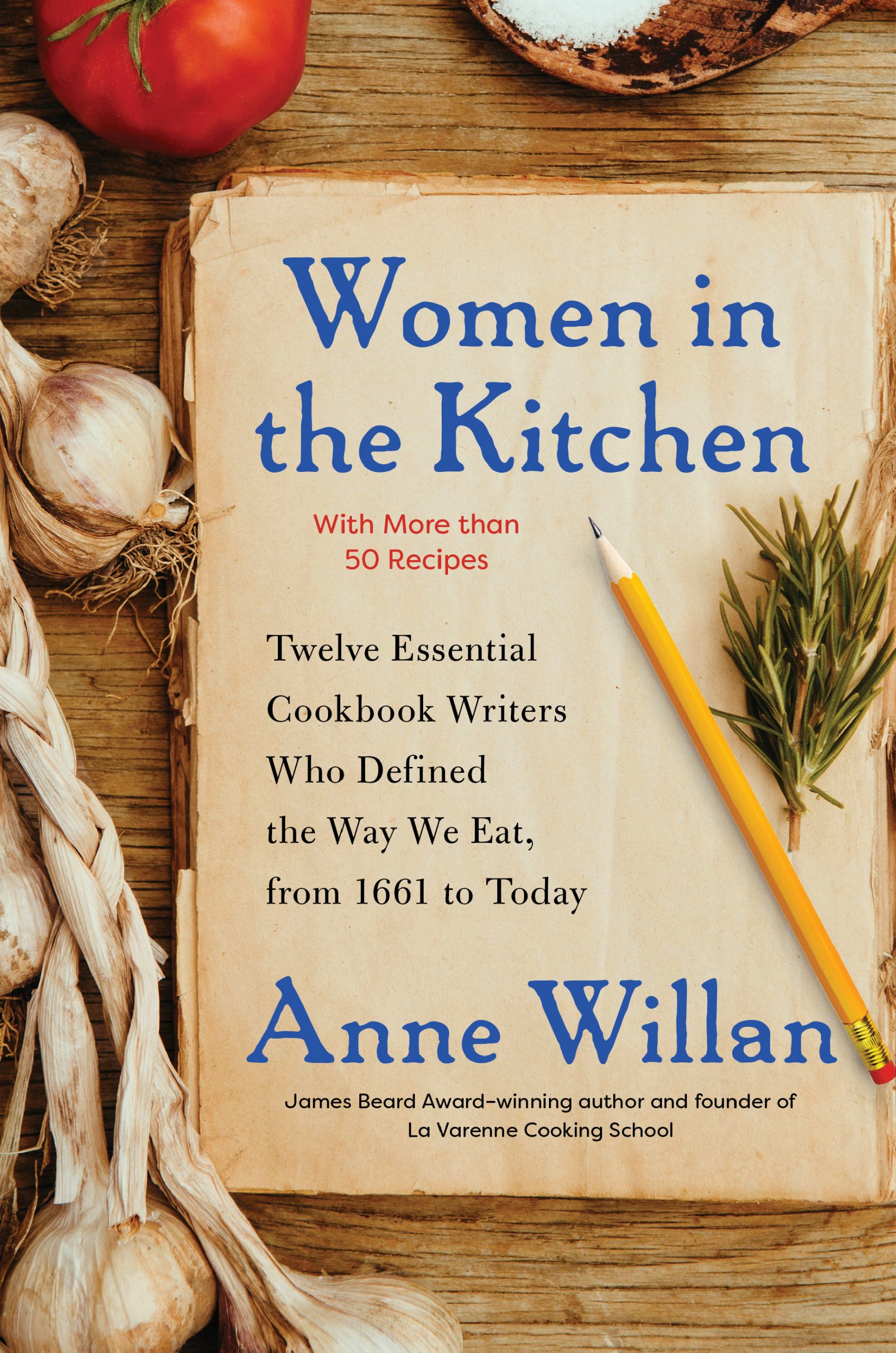
Women in the Kitchen: Twelve Essential Cookbook Writers Who Defined the Way We Eat, from 1661 to Today
Anne Willan
Scribner
August 11, 2020
$28/Hardcover
ISBN-13: 978-1501173318
Anne Willan
Scribner
August 11, 2020
$28/Hardcover
ISBN-13: 978-1501173318
 Anne Willan founded La Varenne Cooking School in Paris in 1975 and has written more than thirty books, including the double James Beard Award–winning The Country Cooking of France, the Gourmand Award–winning The Cookbook Library, and the groundbreaking La Varenne Pratique, as well as the Look & Cook series, showcased on PBS. In 2013, she was inducted into the James Beard Foundation Awards Hall of Fame. Willan serves as an emeritus adviser for the Julia Child Foundation for Gastronomy and the Culinary Arts. She divides her time between London and the South of France.
Anne Willan founded La Varenne Cooking School in Paris in 1975 and has written more than thirty books, including the double James Beard Award–winning The Country Cooking of France, the Gourmand Award–winning The Cookbook Library, and the groundbreaking La Varenne Pratique, as well as the Look & Cook series, showcased on PBS. In 2013, she was inducted into the James Beard Foundation Awards Hall of Fame. Willan serves as an emeritus adviser for the Julia Child Foundation for Gastronomy and the Culinary Arts. She divides her time between London and the South of France.
Anne Willan, award-winning culinary historian, cookbook writer, teacher, and founder of La Varenne Cooking School, traces the origins of American cooking through profiles of twelve influential cookbook authors whose recipes and ideas changed the way we eat.
Women in the Kitchen explores the development of home cooking from the first published cookbook in 1661 to the early colonial days to the transformative popular works by Fannie Farmer, Irma Rombauer, Julia Child, Edna Lewis, Marcella Hazan, and Alice Waters. Willan offers a brief biography of each woman, highlighting her key contributions, seminal books, and representative dishes. The book features fifty original recipes—as well as updated versions Willan has tested and modernized for the contemporary kitchen.
This engaging narrative moves seamlessly through the centuries to help readers understand the ways cookbook authors inspired one another, that they in part owe their places in history to those who came before them, and how they forever changed the culinary landscape.